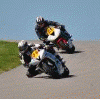NEW 2009 Yamaha YZF-R1 Rossi EU commercial
-
Similar Content
-
- 15 replies
- 3,249 views
-
- 0 replies
- 7,215 views
-
Breaking news!!
By Tonik,
- 0 replies
- 5,574 views
-
- 4 replies
- 4,093 views
-
New record!
By Casper,
- 15 replies
- 4,182 views
-





Recommended Posts
Join the conversation
You can post now and register later. If you have an account, sign in now to post with your account.